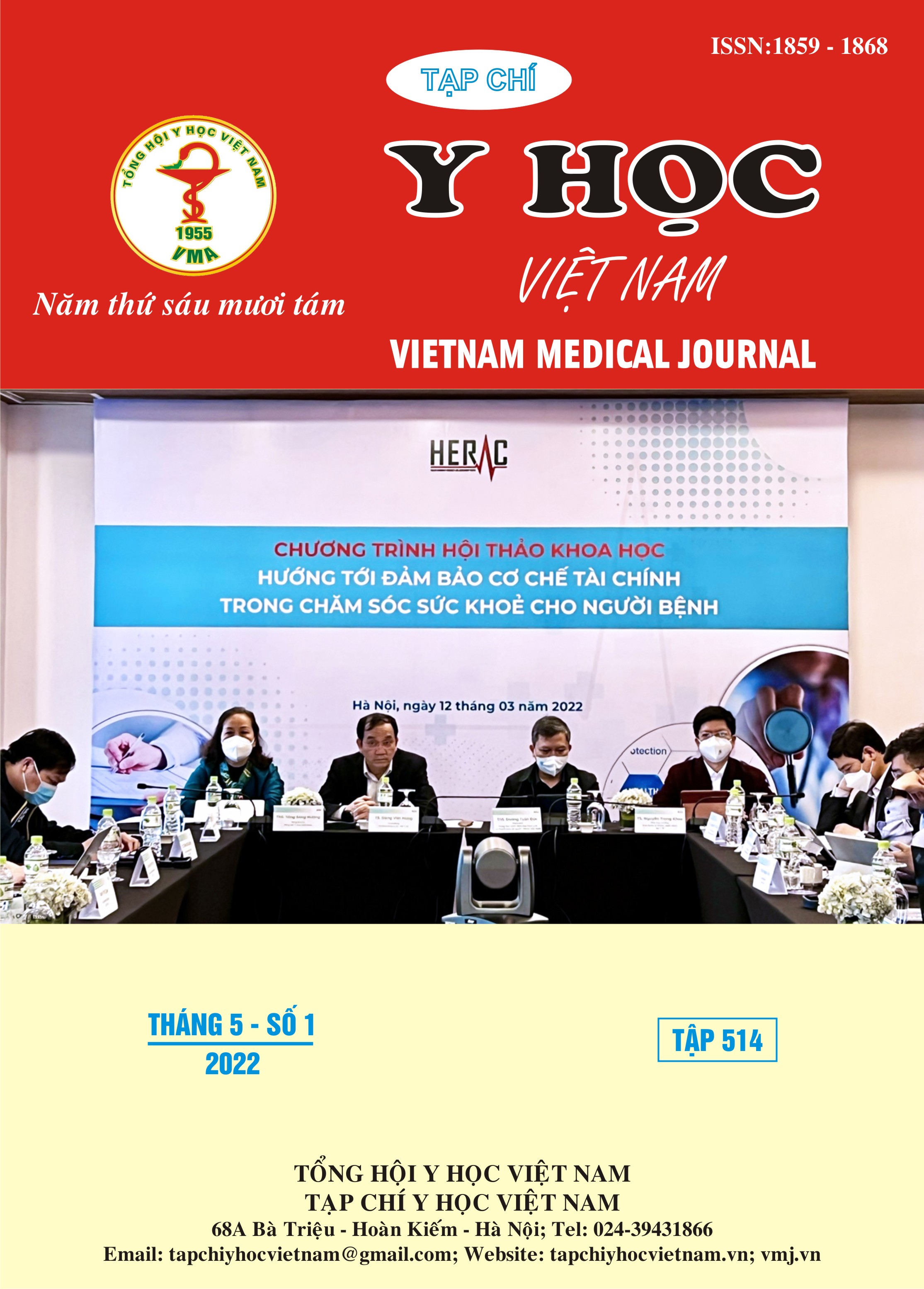KẾT QUẢ PHẪU THUẬT ĐƯỜNG SAU PHÚC MẠC CÓ NỘI SOI HỖ TRỢ ĐIỀU TRỊ VIÊM TUỴ HOẠI TỬ NHIỄM TRÙNG
Nội dung chính của bài viết
Tóm tắt
Mục tiêu: đánh giá kết quả và những kinh nghiệm ban đầu của kỹ thuật. Đối tượng và phương pháp nghiên cứu: Nghiên cứu mô tả hối cứu 12 trường hợp viêm tụy cấp hoại tử được phấu thuật sau phúc mạc có nội soi hỗ trợ lấy tổ chức hoại tử từ 2019 đến 2022 tại khoa Ngoại tổng hợp Bệnh viện Bạch Mai. Kết quả: Tỉ lệ nam/nữ là 5/1, độ tuổi trung bình: 56,7, thời gian trung bình từ lúc khởi phát bệnh đến lúc mổ là 21,5 ngày, thời gian mổ trung bình 82,1 phút, bệnh nhân mổ 1 lần là 83,4%, phải mổ 2 lần là 16,6%. Số trường hợp can thiệp vào cả hai bên là 6 bệnh nhân (50%), Can thiệp bên trái là 5 (41,7%), bên phải; là 1(8,3%). Tỉ lệ tử vong là 8,3%, tỉ lệ biến chứng là 16,7%. Kết luận: Phẫu thuật đường sau phúc mạc có nội soi hỗ trợ lấy tổ chức hoại tử để điều trị viêm tụy hoại là phương pháp ít xâm hại. Kỹ thuật nên được chỉ định vào tuần thứ 3 từ khi khởi phát bệnh, là phương pháp an toàn và hiệu quả với tỉ lệ thành công cao, tỉ lệ biến chứng và tử vong thấp.
Chi tiết bài viết
Từ khóa
Viêm tụy cấp, viêm tụy hoại tử, phẫu thuật nội soi, phẫu thuật ít xâm hại, phẫu thuật sau phúc mạc có nội soi hỗ trợ
Tài liệu tham khảo
2. van Santvoort H. C. et al. (2010), "A step-up approach or open necrosectomy for necrotizing pancreatitis", N Engl J Med. 362 (16), pp. 1491-1502.
3. Sorrentino L. et al. (2017), "Combined totally mini-invasive approach in necrotizing pancreatitis: a case report and systematic literature review", World J Emerg Surg. 12, pp. 16.
4. Fagniez P. L. et al. (1989), "Direct retroperitoneal approach to necrosis in severe acute pancreatitis", Br J Surg. 76 (3), pp. 264-267.
5. Gambiez L. P. et al. (1998), "Retroperitoneal approach and endoscopic management of peripancreatic necrosis collections", Arch Surg. 133 (1), pp. 66-72.
6. Carter C. R. et al. (2000), "Percutaneous necrosectomy and sinus tract endoscopy in the management of infected pancreatic necrosis: an initial experience", Ann Surg. 232 (2), pp. 175-180.
7. Horvath K. D. et al. (2001), "Laparoscopic assisted percutaneous drainage of infected pancreatic necrosis", Surg Endosc. 15 (7), pp. 677-682.
8. van Santvoort H. C. et al. (2007), "Case-matched comparison of the retroperitoneal approach with laparotomy for necrotizing pancreatitis", World J Surg. 31 (8), pp. 1635-1642.
9. Yokoe M. et al. (2015), "Japanese guidelines for the management of acute pancreatitis: Japanese Guidelines 2015", J Hepatobiliary Pancreat Sci. 22 (6), pp. 405-432.
10. Doctor N. et al. (2011), "Analysis of the delayed approach to the management of infected pancreatic necrosis", World J Gastroenterol. 17 (3), pp. 366-371.


